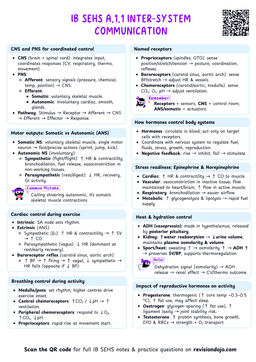Coping with Stress: Strategies for Managing Psychological Strain
What is Stress and How Does It Affect Us?
Stress
Humans retain an evolutionary stress response similar to animals, activating the sympathetic nervous system in threatening situations. This fight-or-flight reaction increases heart rate and releases epinephrine (adrenaline) to mobilize energy for action.
- Stress is the body’s psychological and physiological response to a perceived challenge or threat.
- A stressor is any event or situation that triggers this response. Interestingly, stress can be both positive (eustress) and negative (distress). For example:
- Positive stress: Feeling energized and motivated by an upcoming opportunity, like a championship game.
- Negative stress: Feeling overwhelmed by the fear of underperforming in a competition or failing an exam.
- The way you interpret and respond to stressors is key to managing stress effectively. This is where coping strategies come into play.
Coping
Coping
Coping is defined by Lazarus and Folkman (1984) as the constantly changing cognitive and behavioral efforts to manage internal or external demands perceived as taxing or exceeding personal resources.
- Coping involves thoughts and/or behavior
- Thoughts related to coping can be studied through self-reports, such as think-aloud protocols, retrospective questionnaires, or interviews.
- Techniques like video prompts may enhance recall accuracy.
- Coping can be in response to internal and external demands
- Internal stressors include self-doubt, injuries, fatigue, and distractions.
- External stressors may come from external circumstances but are not always obvious.
- Perception of demand and resources varies among individuals
- Individuals assess stress levels based on their confidence in their skills and abilities (self-efficacy).
- This perception is subjective and may differ from reality or external expectations.
- Coping is about making efforts to manage stress
- Success of coping is not always measured by the outcome but by the effort put into managing stress.
- Researchers focus on what people do to cope and the effectiveness of different coping strategies.
How do you typically respond to stress, do you use problem-focused, emotion-focused, or avoidance-focused coping strategies? Reflect on a recent stressful situation and evaluate the effectiveness of your chosen approach.
Coping Strategies: Problem-Focused, Emotion-Focused, and Avoidance-Focused
- Coping strategies are the methods individuals use to manage stress. These strategies can be grouped into three main types:
- Problem-focused,
- Emotion-focused
- Avoidance-focused.
Problem-Focused Coping: Tackling the Stressor Directly
- Problem-focused coping involves addressing the source of stress to reduce or eliminate it.
- This approach is proactive and often leads to long-term solutions. Examples include:
- Problem-solving: Identifying the root cause of stress and finding ways to resolve it.
- Removing the source of stress: For instance, delegating tasks to reduce workload.
- Information seeking: Gathering knowledge to feel more prepared, such as researching an opponent’s playing style before a match.
Emotion-Focused Coping: Managing Emotional Responses
- Emotion-focused coping doesn’t change the stressor itself but helps regulate your emotional response to it.
- This approach is useful when the stressor cannot be easily altered. Examples include:
- Relaxation techniques: Deep breathing or progressive muscular relaxation (PMR) to calm the body.
- Seeking emotional support: Talking to friends, family, or a coach for reassurance.
- Self-talk: Using positive affirmations to shift your mindset.
Avoidance-Focused Coping: Distancing from the Stressor
- Avoidance-focused coping involves physically or psychologically distancing yourself from the stressor.
- While this can provide temporary relief, it’s often less effective in the long term. Examples include:
- Ignoring the stressor: Pretending the problem doesn’t exist.
- Procrastinating: Delaying action on a stressful task.
- Quitting: Withdrawing from a situation entirely.
Self-Talk: A Versatile Coping Technique
- Self-talk is a simple yet powerful coping strategy that can be both problem-focused and emotion-focused.
- It involves the internal dialogue you have with yourself, which can influence your thoughts, emotions, and actions.
Types of Self-Talk: Positive vs. Negative
- Positive self-talk: Encouraging and constructive thoughts, such as “I can handle this challenge.”
- Negative self-talk: Critical or self-defeating thoughts, like “I’m going to fail.”
| Type of Self Talk | Examples |
|---|---|
| Unintentional | Spontaneous thoughts, often emotional. Can be positive ("Don't give up!") or negative ("My legs feel heavy..."). |
| Strategic | Planned and structured statements to enhance performance. Example: "Hills are my strength, when I get there increase cadence, cash in on my hill training, break away from the pack." |
| Goal-Directed Self-Talk | Focuses on specific actions to achieve a performance goal. Example: "OK, shorten stride length, keep breathing even-paced, dig in, don’t look up." |
Practical Mechanisms for Self-Talk
Here are some techniques to make self-talk more effective:
- Recall positive experiences: Reflect on past successes to boost confidence. For example, “I’ve performed well under pressure before, and I can do it again.”
- Use acronyms: Create a memorable phrase to guide your thoughts. For instance, “CALM” could stand for “Control, Assess, Learn, Motivate.”
- Describe physical movements: Use simple words to focus on actions, such as “breathe” or “relax” during a tense moment.
Relaxation Techniques: Regulating Emotional Responses
- Relaxation techniques are emotion-focused strategies that help reduce physiological and psychological stress.
- These methods are particularly effective for managing somatic (physical) symptoms of stress, such as a racing heart or tense muscles.


